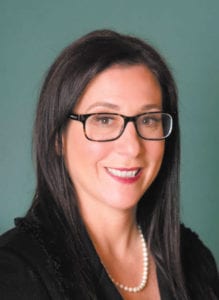Before we can tackle the complexities of weight loss, we have to understand that there are a number of misconceptions. Therefore, “synonymous” is the word of the day. According to Merriam-Webster’s Dictionary, synonymous means, “similar in meaning or significance” (1).
At this point, you’re probably wondering what this has to do with weight loss. Essentially, our weight loss lexicon is full of erroneous synonymous statements.
When we think of weight loss, “obesity” is often the first thing that comes to mind; however, someone who needs to lose weight is not the same as someone who is obese. Weight loss can be important for not just the obese population but also for the overweight and, yes, even for “normal” weight individuals.
Our second erroneously synonymous relationship is between having a normal body-mass index (BMI) and being fit. If I am within the ideal range of BMI (18-25 kg/m2), then I am fit. BMI is a measurement that involves only height and weight, not body fat or lean muscle mass. Body fat and muscle mass are much more important components to being truly fit than BMI. They are more closely related to achieving better health.
Weight loss is also thought of as being synonymous with better health. While it can be the case, this is not necessarily true. Some patients lose weight unintentionally with a chronic illness or even with sarcopenia (muscle wasting), which is actually unhealthy.
Yet, another mistaken interpretation is based on the presumption that if the body burns 3,500 calories, then you should lose roughly one pound. The problem with this is that there is a multitude of factors involved with weight loss, including metabolism, medications, diet composition, exercise or calorie expenditure, stress and the hormones leptin and ghrelin.
Weight loss misconceptions can impact our results.
Finally, the last faulty synonymous relationship that I will mention is that of carbohydrates and grains. Though grains are carbohydrates, not all carbohydrates are grains. In fact, starchy vegetables, dark green leafy vegetables, fruits, beans and legumes are all carbohydrates.
Where am I going with this? Well, let’s look at the research.
The disappointment of ‘The Biggest Loser’
No, I am not talking about the reality TV show’s ratings. Instead, I’m referring to a recently completed study that followed season 8 contestants. The study’s results show that resting metabolic rate, better known as metabolism while relaxing, decreases with significant weight loss and does not seem to return to baseline levels even after reducing exercise and diet restrictions (2). In other words, the body may have a set point to which it struggles to return. Most of the participants in the study gained back most of the weight lost or even more than what they had lost, except for one participant. This is not surprising; participants exercised enormous amounts of time per day, treating exercise as a full time job. One contestant said that he was exercising seven hours a day and burning 8,000 to 9,000 kcal/day.
While the actual weight loss competition was over 30 weeks, or approximately seven months, the researchers looked at the contestants six years after the program. The findings were disheartening. According to a New York Times opinion piece entitled, “Why you can’t lose weight on a diet” by a neuroscientist, we should stop dieting and focus on exercise and mindful eating (3). Though I would agree that exercise and mindful eating are very important, so is your diet or lifestyle modification as a whole.
Believe it or not, there were still positives that came from this study. Although the participants could not maintain the diet restrictions or strenuous exercise, there was still a significant improvement in fat mass six years later.
However, the study did have its weaknesses. There was no control group, and the study was very small, with only 14 out of 16 participants evaluated at six years. There were only three data points, one at baseline, one at 30 weeks and one at six years, so we have no idea what happened between seven months and six years. Also, it is not clear from the study what participants were eating during the first 30 weeks or thereafter, nor how much exercise they were getting. This description was obfuscated at best in the study.
Exercise: It’s all in the timing
While exercise has recently gotten a bum rap for its low effectiveness with weight loss, there may be hope yet! In a recent small randomized controlled trial, the results showed that athletes who were given the same amount of carbohydrates but consumed them only at breakfast and lunch — but not dinner — performed significantly better and had more lean muscle mass than a traditional diet where carbohydrates are distributed throughout the day (4).
This modification of timing with the carbs was referred to as the “sleep-low” diet. The athletes on the sleep-low diet performed especially well in the morning, when they were mostly relying on fat as a source of fuel, not carbs. Previous studies that had reduced carbs rather than change their timing had mixed results. Though this study involved athletes, there could be some benefit to you and me in terms of fat loss and lean muscle development.
Why BMI is less relevant
People tend to be obsessed with BMI. BMI defines whether someone is obese, overweight or in the “ideal” weight range. However, we should never be defined by our weight. BMI is also not the most accurate reading. This next study is an example of this point. Here, results showed that those who had a BMI of 27, considered to be overweight, were the least likely to die prematurely (5).
This means that being overweight is better than ideal weight, right? Not so fast! For one thing, the population was Danish, not American. For another, it was unclear whether the researchers took into account unintentional weight loss, such as from sarcopenia (loss of muscle mass that occurs in the elderly who don’t exercise) or chronic diseases, such as autoimmune diseases. Thus, BMI does not give a complete picture of someone’s health status.
Fruits and vegetables to the rescue
The good news is that taking diet composition into account may help an individual prevent weight gain. In a meta-analysis (a group of three observational studies), results showed that fruit and vegetable consumption was inversely associated with weight gain (6). Fruits and vegetables included dark leafy green vegetables, any type of berries, pears and apples. These are considered to have higher fiber and a lower glycemic load.
The exception to the inverse association was with starchy vegetables, which are considered to have lower fiber and higher glycemic load. Examples include corn and potatoes. These contributed to weight gain.
The takeaway from this is that doing extreme things to try to lose weight rapidly is not sustainable and could ultimately result in detrimental long-term effects. Also, one should not focus on BMI, but rather on body composition, especially fat percentage and fat mass. Exercise before eating carbohydrates, such as grains and starchy vegetables, is more likely to burn fat and produce lean muscle mass. And, finally, concentrating on diet composition, especially fruits and vegetables, is likely to result in healthy weight loss and a favorable change in body composition.
References
(1) merriam-webster.com. (2) Obesity (Silver Spring). Online May 2, 2016. (3) https://www.nytimes.com/2016/05/08/opinion/sunday. (4) Med Sci Sports Exerc. 2016 Apr;48(4):663-672. (5) JAMA. 2016;315(18):1989-1996. (6) PLoS Med 13(1): e1001956.
Dr. Dunaief is a speaker, author and local lifestyle medicine physician focusing on the integration of medicine, nutrition, fitness and stress management. For further information, visit www.medicalcompassmd.com or consult your personal physician.



 Blasberg’s small, Hauppauge based firm handles two major areas of law that would seem daunting to someone trying to tackle either alone. She specializes in representing clients large or small in tax controversy cases against the IRS. Her other area of expertise is in estate planning. Either of those tasks might feel like drowning, but Blasberg can be there to remind you that solving your problems could be as simple as standing up.
Blasberg’s small, Hauppauge based firm handles two major areas of law that would seem daunting to someone trying to tackle either alone. She specializes in representing clients large or small in tax controversy cases against the IRS. Her other area of expertise is in estate planning. Either of those tasks might feel like drowning, but Blasberg can be there to remind you that solving your problems could be as simple as standing up.



















































